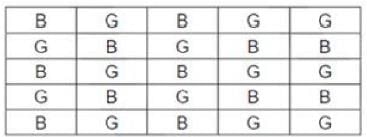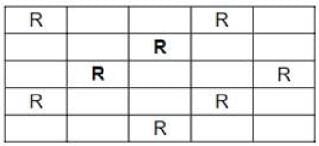CAT 2020 Slot 2: Past Year Question Paper - CAT MCQ
30 Questions MCQ Test - CAT 2020 Slot 2: Past Year Question Paper
The author identifies three essential factors according to which theories of aggression are most commonly categorised. Which of the following options is closest to the factors identified by the author?
The author discusses all of the following arguments in the passage EXCEPT that:
| 1 Crore+ students have signed up on EduRev. Have you? Download the App |
All of the following statements can be seen as logically implied by the arguments of the passage EXCEPT:
“An enemy combatant may be subjected to torture in order to extract useful intelligence, though those inflicting the torture may have no real feelings of anger or animosity toward their subject.” Which one of the following best explicates the larger point being made by the author here?
“Why toil away as a starving peasant in the 16th century when a successful pirate made up to £4,000 on each raid?” In this sentence, the author’s tone can best be described as being:
“A more eclectic history might have included the conquistadors, Vasco da Gama and the East India Company. But Lehr sticks to the disorganised small fry . . .” From this statement we can infer that the author believes that:
We can deduce that the author believes that piracy can best be controlled in the long run:
The author ascribes the rise in piracy today to all of the following factors EXCEPT:
“No amount of social analysis can account fully for the existence of Michelangelo or Leonardo.” In light of the passage, which one of the following interpretations of this sentence is the most accurate?
“Seeing . . . operates on the foundation of covenants with images that establish the conditions for meaningful visual experience.” In light of the passage, which one of the following statements best conveys the meaning of this sentence?
Which set of keywords below most closely captures the arguments of the passage?
All of the following statements may be considered valid inferences from the passage, EXCEPT:
Which one of the following best describes the word “epiphenomena” in the last sentence of the passage?
Based on the passage, we can infer that the author would be most supportive of which one of the following practices?
All of the following statements, if true, could be seen as supporting the arguments in the passage, EXCEPT:
Which one of the following statements, if false, could be seen as best supporting the arguments in the passage?
Which one of the following statements, if true, could be an accurate inference from the first paragraph of the passage?
Which one of the following statements best captures the main argument of the last paragraph of the passage?
Five jumbled up sentences, related to a topic, are given below. Four of them can be put together to form a coherent paragraph. Identify the odd one out and key in the number of the sentence as your answer:
The four sentences (labelled 1, 2, 3, 4) below, when properly sequenced would yield a coherent paragraph. Decide on the proper sequencing of the order of the sentences and key in the sequence of the four numbers as your answer:
1. While you might think that you see or are aware of all the changes that happen in your immediate environment, there is simply too much information for your brain to fully process everything.
2. Psychologists use the term ‘change blindness’ to describe this tendency of people to be blind to changes though they are in the immediate environment.
3. It cannot be aware of every single thing that happens in the world around you.
4. Sometimes big shifts happen in front of your eyes and you are not at all aware of these changes.
Five jumbled up sentences, related to a topic, are given below. Four of them can be put together to form a coherent paragraph. Identify the odd one out and key in the number of the sentence as your answer:
The passage given below is followed by four alternate summaries. Choose the option that best captures the essence of the passage.
With the Treaty of Westphalia, the papacy had been confined to ecclesiastical functions, and the doctrine of sovereign equality reigned. What political theory could then explain the origin and justify the functions of secular political order? In his Leviathan, published in 1651, three years after the Peace of Westphalia, Thomas Hobbes provided such a theory. He imagined a “state of nature” in the past when the absence of authority produced a “war of all against all.” To escape such intolerable insecurity, he theorized, people delivered their rights to a sovereign power in return for the sovereign’s provision of security for all within the state’s border. The sovereign state’s monopoly on power was established as the only way to overcome the perpetual fear of violent death and war.
The four sentences (labelled 1, 2, 3, 4) below, when properly sequenced would yield a coherent paragraph. Decide on the proper sequencing of the order of the sentences and key in the sequence of the four numbers as your answer:
1. It also has four movable auxiliary telescopes 1.8 m in diameter.
2. Completed in 2006, the Very Large Telescope (VLT) has four reflecting telescopes,8.2 m in diameter that can observe objects 4 billion times weaker than can normally be seen with the naked eye.
3. This configuration enables one to distinguish an astronaut on the Moon.
4. When these are combined with the large telescopes, they produce what is called interferometry: a simulation of the power of a mirror 16 m in diameter and the resolution of a telescope of 200 m.
The passage given below is followed by four alternate summaries. Choose the option that best captures the essence of the passage.
All humans make decisions based on one or a combination of two factors. This is either intuition or information. Decisions made through intuition are usually fast, people don’t even think about the problem. It is quite philosophical, meaning that someone who made a decision based on intuition will have difficulty explaining the reasoning behind it. The decision-maker would often utilize her senses in drawing conclusions, which again is based on some experience in the field of study. On the other side of the spectrum, we have decisions made based on information. These decisions are rational — it is based on facts and figures, which unfortunately also means that it can be quite slow. The decision-maker would frequently use reports, analyses, and indicators to form her conclusion. This methodology results in accurate, quantifiable decisions, meaning that a person can clearly explain the rationale behind it.
The passage given below is followed by four alternate summaries. Choose the option that best captures the essence of the passage.
The rural-urban continuum and the heterogeneity of urban settings pose an obvious challenge to identifying urban areas and measuring urbanization rates in a consistent way within and across countries. An objective methodology for distinguishing between urban and rural areas that is based on one or two metrics with fixed thresholds may not adequately capture the wide diversity of places. A richer combination of criteria would better describe the multifaceted nature of a city’s function and its environment, but the joint interpretation of these criteria may require an element of human judgment.
The four sentences (labelled 1, 2, 3, 4) below, when properly sequenced would yield a coherent paragraph. Decide on the proper sequencing of the order of the sentences and key in the sequence of the four numbers as your answer:
1. But the attention of the layman, not surprisingly, has been captured by the atom bomb, although there is at least a chance that it may never be used again.
2. Of all the changes introduced by man into the household of nature, [controlled]largescale nuclear fission is undoubtedly the most dangerous and most profound.
3. The danger to humanity created by the so-called peaceful uses of atomic energy may, however, be much greater.
4. The resultant ionizing radiation has become the most serious agent of pollution of the environment and the greatest threat to man’s survival on earth.
Twenty five coloured beads are to be arranged in a grid comprising of five rows and five columns. Each cell in the grid must contain exactly one bead. Each bead is coloured either Red, Blue or Green.
While arranging the beads along any of the five rows or along any of the five columns, the rules given below are to be followed:
1. Two adjacent beads along the same row or column are always of different colours.
2. There is at least one Green bead between any two Blue beads along the same row or column.
3. There is at least one Blue and at least one Green bead between any two Red beads along the same row or column.
Every unique, complete arrangement of twenty five beads is called a configuration.
The total number of possible configuration using beads of only two colours is:
Twenty five coloured beads are to be arranged in a grid comprising of five rows and five columns. Each cell in the grid must contain exactly one bead. Each bead is coloured either Red, Blue or Green.
While arranging the beads along any of the five rows or along any of the five columns, the rules given below are to be followed:
1. Two adjacent beads along the same row or column are always of different colours.
2. There is at least one Green bead between any two Blue beads along the same row or column.
3. There is at least one Blue and at least one Green bead between any two Red beads along the same row or column.
Every unique, complete arrangement of twenty five beads is called a configuration.
What is the maximum possible number of Red beads that can appear in any configuration ?
Twenty five coloured beads are to be arranged in a grid comprising of five rows and five columns. Each cell in the grid must contain exactly one bead. Each bead is coloured either Red, Blue or Green.
While arranging the beads along any of the five rows or along any of the five columns, the rules given below are to be followed:
1. Two adjacent beads along the same row or column are always of different colours.
2. There is at least one Green bead between any two Blue beads along the same row or column.
3. There is at least one Blue and at least one Green bead between any two Red beads along the same row or column.
Every unique, complete arrangement of twenty five beads is called a configuration.
What is the minimum number of Blue beads in any configuration ?
Twenty five coloured beads are to be arranged in a grid comprising of five rows and five columns. Each cell in the grid must contain exactly one bead. Each bead is coloured either Red, Blue or Green.
While arranging the beads along any of the five rows or along any of the five columns, the rules given below are to be followed:
1. Two adjacent beads along the same row or column are always of different colours.
2. There is at least one Green bead between any two Blue beads along the same row or column.
3. There is at least one Blue and at least one Green bead between any two Red beads along the same row or column.
Every unique, complete arrangement of twenty five beads is called a configuration.
Two Red beads have been placed in ‘second row, third column’ and ‘third row, second column’. How many more Red beads can be placed so as to maximise the number of Red beads used in the configuration?

























